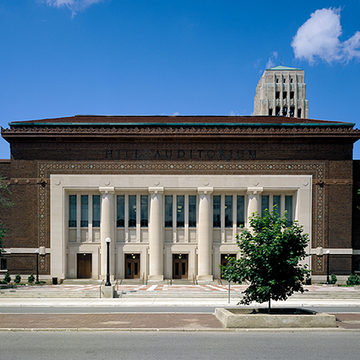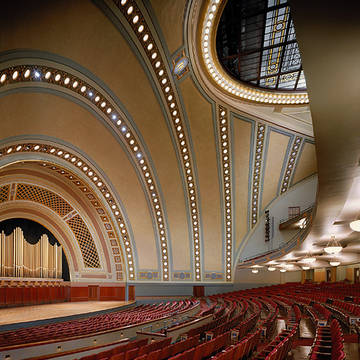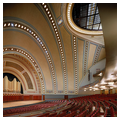Recent renovations transformed one of the nation's great concert halls into a performing arts center that meets the technology and use requirements of the twenty-first century.
Arthur Hill (1848–1909), an alumnus and a regent of the University of Michigan, bequeathed $200,000 in 1910 for an auditorium for university gatherings and musical events. Kahn and associate Wilby, in consultation with acoustical engineer Tallant of New York, created a large, distinctive auditorium with superior acoustics. It cost $282,000, and James L. Stuart of Pittsburgh built it. The massive exterior block is broken by an engaged unfluted Doric colonnade in antis that frames the stone entrance like a proscenium. The overall surface appearance is, however, Sullivanesque, with decorative red and brown brickwork against brick laid in English bond, terra-cotta, and limestone trim. Anthemion ornamentation runs around the cornice. The 4,200-seat auditorium's unique parabolic shape and double soundproof walls permit every sound from the stage to be heard in all parts of the room. Hill Auditorium serves as the primary performance space for the University Musical Society's season programs and for the School of Music recitals.
In 2002–2004, reconfiguration of the main floor left the auditorium with fewer seats but more leg room and better sight lines. The spacious new lower-level lobby was given a concession stand. The project improved restrooms, and installed new heating and air-conditioning systems and two new elevators. Restored are the original pale blue, gray, orange, and gold paint colors of the auditorium, the lights, and the pipe organ.





